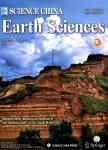Biome reconstruction on the Tibetan Plateau since the Last Glacial Maximum using a machine learning method
Biome reconstruction on the Tibetan Plateau since the Last Glacial Maximum using a machine learning method作者机构:Key Laboratory ofLand Surface Pattern and SimulationInstitute of Geographic Sciences and Natural Resources ResearchChinese Academy of SciencesBeijing 100101China Alpine Paleoecology and Human Adaptation(ALPHA)GroupState Key Laboratory of Tibetan Plateau Earth System Science(LATPES)Institute of Tibetan Plateau ResearchChinese Academy of SciencesBeijing 100101China University of Chinese Academy of SciencesBeijing 100049China
出 版 物:《Science China Earth Sciences》 (中国科学(地球科学英文版))
年 卷 期:2022年第65卷第3期
页 面:518-535页
核心收录:
学科分类:0711[理学-系统科学] 07[理学] 0705[理学-地理学] 0706[理学-大气科学] 0701[理学-数学] 0812[工学-计算机科学与技术(可授工学、理学学位)] 0713[理学-生态学]
基 金:supported by the National Natural Science Foundation of China(Grant No.41690113) the Strategic Priority Research Program of the Chinese Academy of Sciences(Grant No.XDA20070101) the National Natural Science Foundation of China(Grant Nos.42071114,41977395,and 41671202)
主 题:Biome reconstruction Random forest algorithm Biomisation method Pollen data Last Glacial Maximum Tibetan Plateau
摘 要:Historical biome changes on the Tibetan Plateau provide important information that improves our understanding of the alpine vegetation responses to climate ***,a comprehensively quantitative reconstruction of the historical Tibetan Plateau biomes is not possible due to the lack of quantitative methods that enable appropriate classification of alpine biomes based on proxy data such as fossil pollen *** this study,a pollen-based biome classification model was developed by applying a random forest algorithm(a supervised machine learning method)based on modern pollen assemblages on and around the Tibetan Plateau,and its robustness was assessed by comparing its results with the predictions of the biomisation *** results indicated that modern biome distributions reconstructed using the random forest model based on modern pollen data generally concurred with the observed zonal *** random forest model had a significantly higher accuracy than the biomisation method,indicating the former is a more suitable tool for reconstructing alpine biome changes on the Tibetan *** random forest model was then applied to reconstruct the Tibetan Plateau biome changes from 22 ka BP to the present based on 51 fossil pollen *** reconstructed biome distribution changes on the Tibetan Plateau generally corresponded to global climate changes and Asian monsoon *** the Last Glacial Maximum,the Tibetan Plateau was mainly desert with subtropical forests distributed in the *** the last deglaciation,the alpine steppe began expanding and gradually became zonal vegetation in the central and eastern *** meadow occupied the eastern and southeastern areas of the Tibetan Plateau since the early Holocene,and the forest-meadow-steppe-desert pattern running southeast to northwest on the Tibetan Plateau was established *** the mid-Holocene,subtropical forests extended north,which reflected the“optimum***



